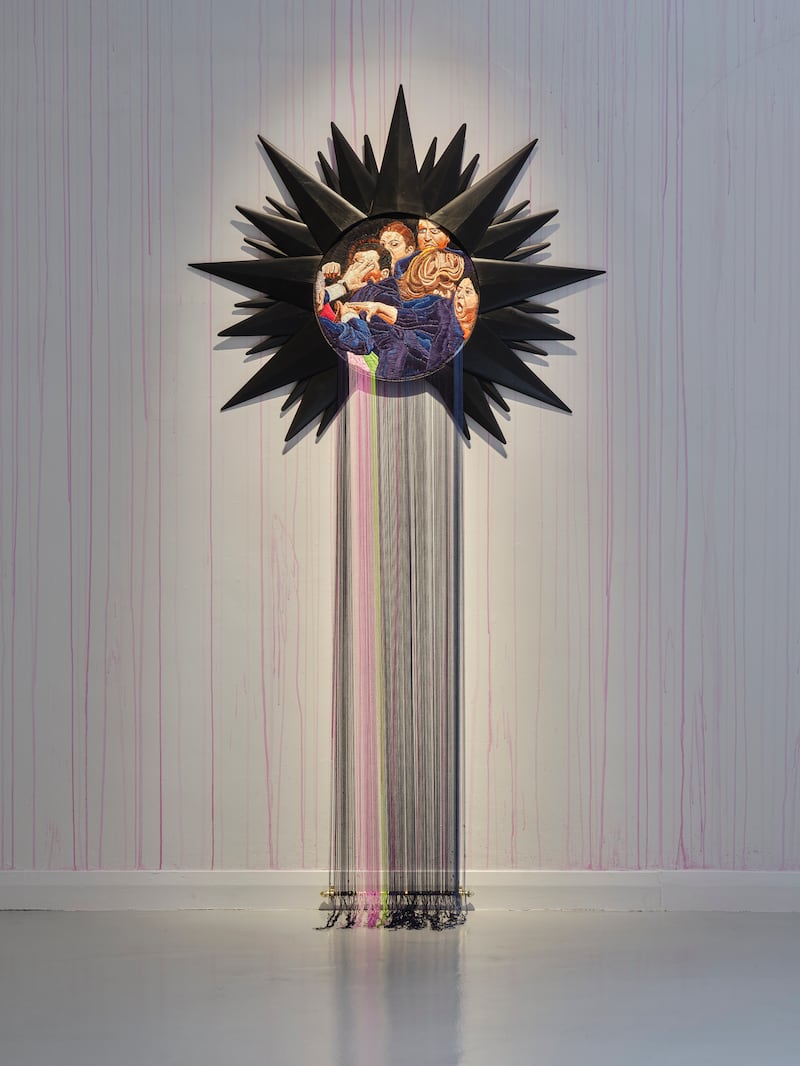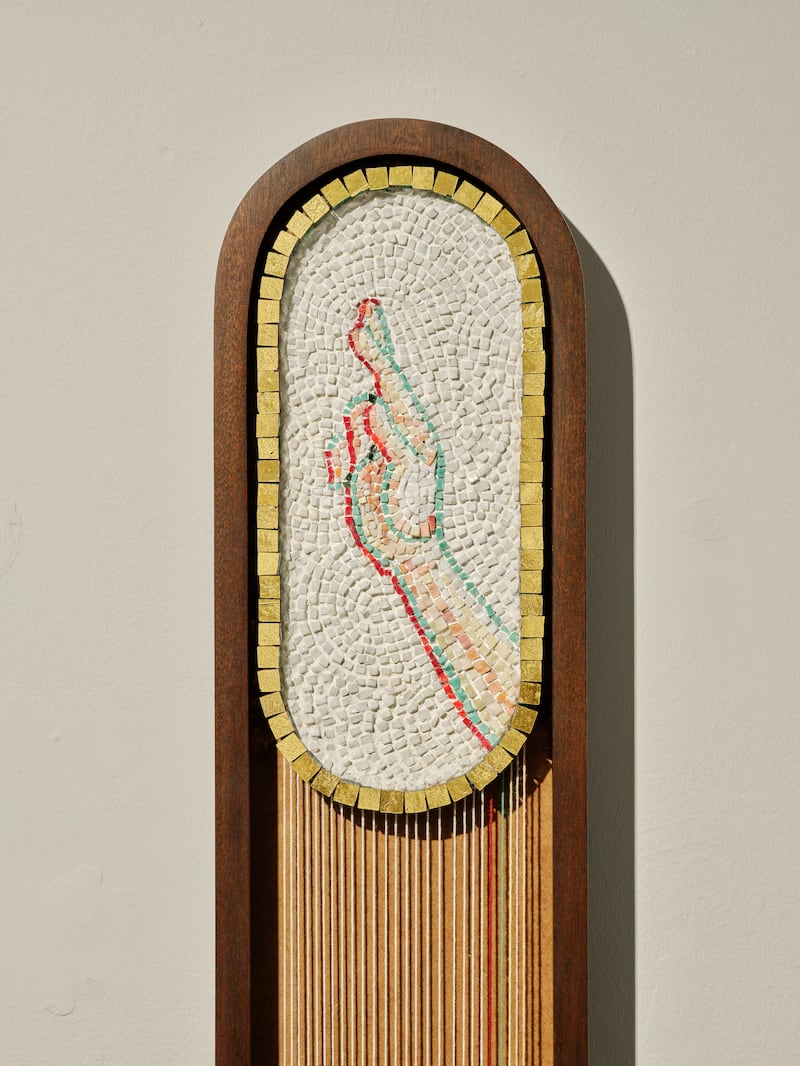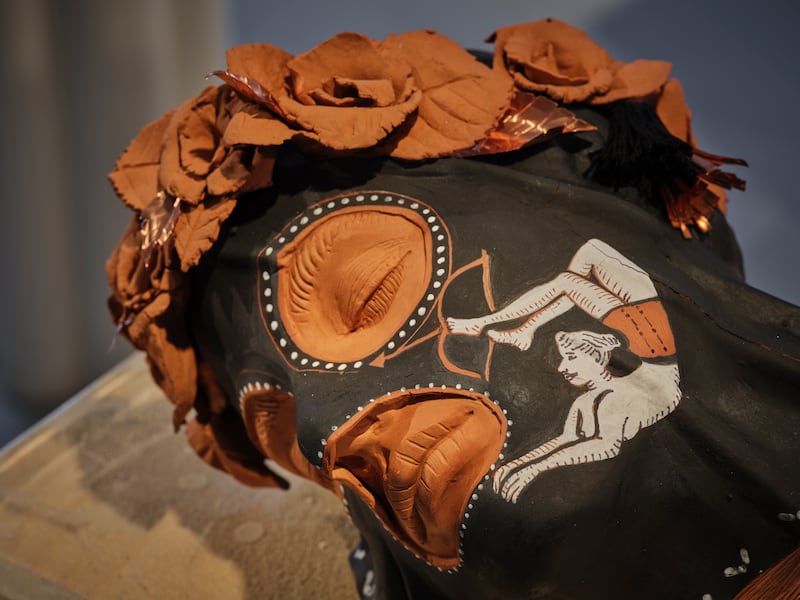Ursula Burke: Siren
Butler Gallery, Kilkenny
★★★★★
For the better part of two decades Ursula Burke has brought to life materials and genre conventions that belong to antiquity. By dusting off and reinterpreting styles from the classical period, Burke makes artworks that rearrange our perspective of the present.
In several previous exhibitions Burke spearheaded the use, or reappropriation, of the medieval tapestry. Her work in this field is ingenious: the artist’s embroidered compositions are windows on to charged, dynamic scenes, involving crowds of people rendered with intricate detail, often depicting real-life circumstances of political violence.

The colour and complexity of these woven images are immediately arresting: they compel your attention at a visceral level. What’s more, the image is only one element of the overall construction: at the base of the embroidered scene the artist allows the individual coloured threads to hang loose, consolidating into long multicoloured columns that reach to the floor. Like a capital and pillar, this intriguing formal invention is reminiscent of the decorative elements of classical architecture.
Burke’s new exhibition, Siren, at the Butler Gallery in Kilkenny, contains some of her most urgent tapestry works, including her series Embroidery Frieze (the Politicians), which features scenes of violent disagreement in parliaments across the globe. But most of the work is new and, excitingly, demonstrates the artist’s commitment to expanding her vocabulary into new territories, now including sculpture and mosaic.
‘Christ, I’m angry’: Ciara Doherty’s striking interview with Andrew McGinley
I miss Ireland’s wildness and divilment, but after 20 years away, I know it’s not for me
Mark Lanegan, my uncle, died out of the blue after moving to Ireland
Bob Dylan in Dublin: It’s gripping, baffling and something to behold

Fingers Crossed is an example of this new direction. A mosaic made from glass, completed by embroidery thread and a custom oval wooden frame, Fingers Crossed looks like the detailed close-up of a Renaissance-era Christian icon, beautifully rendered in red, turquoise, pink and white tiles. The design’s art-historical connotations are apt: crossing one’s fingers for good luck has its origins in an early Christian practice, where the gesture represented the protection of the Holy Cross.
Placed at the entrance to the main gallery is a large collection of Greco-Roman-style busts, heads and mythological figurines, any one of which could be the subject of an extensive analysis. One exemplary piece, Arab Spring – After Eugène Delacroix, consists of a head ornamented by a Grecian urn. It’s notable for its disfigurement, which gives the impression of an ancient sculpture marred by time and use, while also cleverly suggesting the design of a pandemic-era face mask (a motif that recurs in various places).

The work’s title is indicative of the artist’s wider intent: conditioned by her experience of living in Northern Ireland, Burke’s interest in historical art styles stems from the frisson that occurs when older models of artistic representation are used to connect with contemporary themes. We are habituated through school, television, film and more to associate a certain type of aesthetic and artistic method with a particular period in time, and when that period invades the present the experience is disjunctive. A feeling of ill-suitedness, bordering on the uncanny, accompanies the experience.
This feeling is subtle, and it is at odds with the pleasing aesthetic of the artworks, prompting the audience into a reflective mood, questioning their intuitive responses.
This is a must-see show from an artist growing in confidence and ambition.
Siren continues at the Butler Gallery, Kilkenny, until Sunday, April 27th














